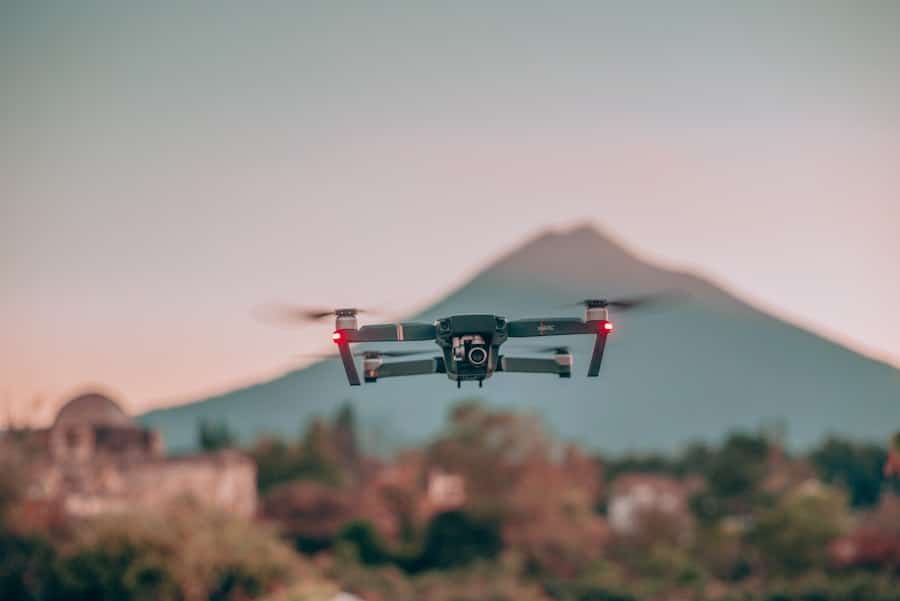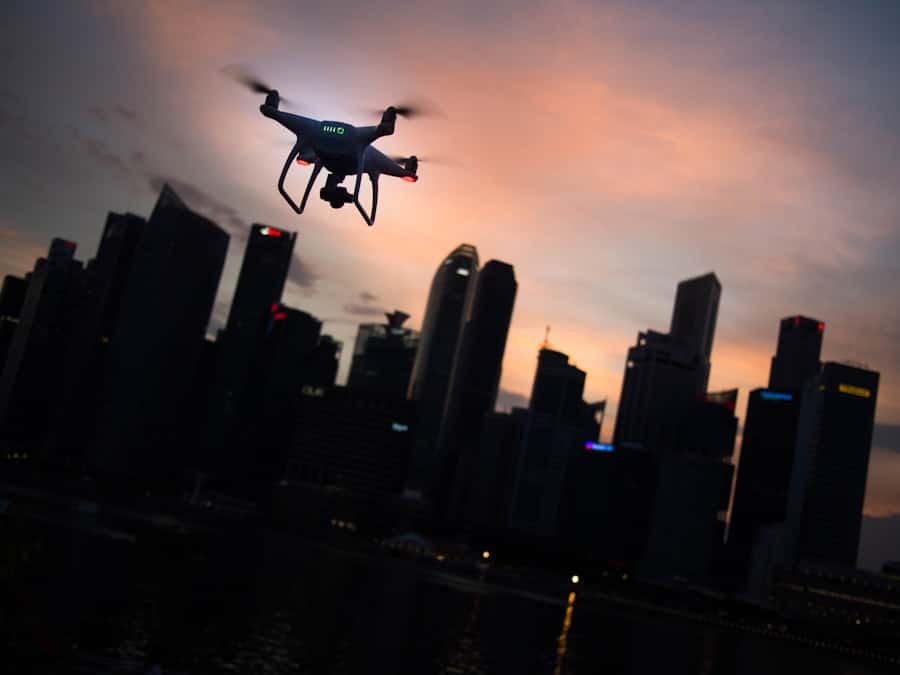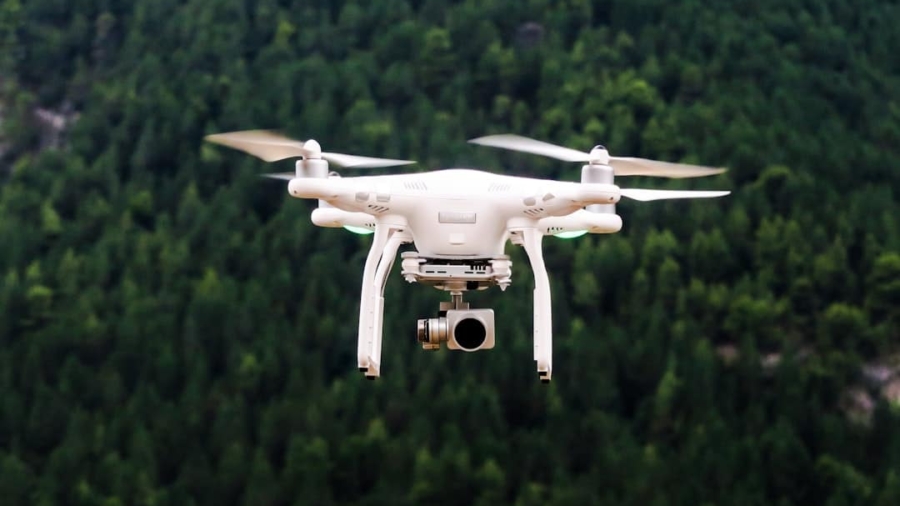The maintenance of satellites in orbit is a critical aspect of modern space operations, ensuring that these complex machines continue to function effectively over their intended lifespans. As the number of satellites in space increases, so does the need for efficient maintenance solutions. Traditionally, satellite maintenance has been a challenging endeavor, often requiring costly and time-consuming missions involving human crews or specialized robotic systems.
The advent of new technologies, particularly drones, has opened up innovative pathways for maintaining satellites in orbit, potentially revolutionizing how we approach satellite upkeep. Satellites serve a multitude of purposes, from communication and navigation to Earth observation and scientific research. Their operational longevity is paramount, as the failure of a single satellite can disrupt services and lead to significant economic losses.
Maintenance tasks can range from simple repairs to complex upgrades, necessitating a versatile approach to ensure that satellites remain operational. The integration of drones into this maintenance paradigm presents an opportunity to enhance efficiency, reduce costs, and minimize risks associated with human involvement in space missions.
Key Takeaways
- Satellite maintenance in orbit is a critical aspect of ensuring the longevity and functionality of satellites in space.
- Drones play a crucial role in satellite maintenance by providing a cost-effective and efficient means of inspecting, repairing, and servicing satellites.
- The advantages of using drones for satellite maintenance include reduced costs, increased safety for human operators, and the ability to access hard-to-reach areas on satellites.
- Different types of drones, such as inspection drones, repair drones, and servicing drones, are used for various tasks in satellite maintenance.
- While drones offer numerous benefits, there are also challenges and limitations to consider, such as the need for advanced technology, regulatory hurdles, and the potential for space debris.
The Role of Drones in Satellite Maintenance
Drones, or unmanned aerial vehicles (UAVs), have gained prominence in various industries due to their ability to perform tasks with precision and efficiency. In the context of satellite maintenance, drones can be deployed for a variety of functions, including inspection, repair, and even servicing of satellites in orbit. Their ability to navigate complex environments and operate autonomously makes them ideal candidates for tasks that would otherwise require extensive human intervention.
Equipped with advanced imaging technologies such as high-resolution cameras and thermal sensors, drones can conduct detailed assessments of satellite surfaces and components. This capability allows for the early detection of potential issues, such as structural damage or malfunctions, enabling timely interventions before problems escalate.
Furthermore, drones can be programmed to follow specific flight paths around satellites, ensuring comprehensive coverage and data collection during inspections.
Advantages of Using Drones for Satellite Maintenance

The use of drones for satellite maintenance offers several advantages that can significantly enhance operational efficiency. One of the most notable benefits is cost reduction. Traditional methods of satellite servicing often involve launching specialized spacecraft or sending astronauts into orbit, both of which are expensive and resource-intensive endeavors.
Drones can be designed to operate at a fraction of the cost, making routine maintenance more feasible for satellite operators. Additionally, drones can improve safety by minimizing the risks associated with human spaceflight. Human missions to repair or service satellites involve extensive training, preparation, and risk management due to the harsh environment of space.
By utilizing drones, operators can reduce the need for human presence in potentially hazardous situations, thereby enhancing overall mission safety. This shift not only protects human life but also allows for more frequent maintenance operations without the logistical challenges associated with crewed missions.
Types of Drones Used in Satellite Maintenance
Various types of drones are being developed and utilized for satellite maintenance tasks, each tailored to specific operational requirements. One prominent category is the fixed-wing drone, which is designed for long-range missions and can cover vast distances with high efficiency. These drones are particularly useful for conducting extensive inspections of large satellite constellations or monitoring multiple satellites within a designated area.
Another type is the multi-rotor drone, which excels in maneuverability and can hover in place for detailed inspections. These drones are equipped with advanced imaging systems that allow them to capture high-resolution images and videos from various angles. Their ability to perform intricate maneuvers makes them ideal for close-up inspections of satellite components that may be difficult to access otherwise.
Hybrid drones that combine features from both fixed-wing and multi-rotor designs are also emerging as viable options for satellite maintenance. These drones can take off and land vertically like multi-rotors while benefiting from the long-range capabilities of fixed-wing designs during flight. This versatility allows them to adapt to different maintenance scenarios, making them valuable assets in the evolving landscape of satellite operations.
Challenges and Limitations of Using Drones for Satellite Maintenance
Despite the numerous advantages that drones offer for satellite maintenance, several challenges and limitations must be addressed before their widespread adoption becomes a reality. One significant challenge is the harsh environment of space itself. Drones must be engineered to withstand extreme temperatures, radiation levels, and vacuum conditions that are prevalent in orbit.
Developing robust materials and technologies that can endure these conditions while maintaining functionality is a complex engineering challenge. Another limitation lies in the autonomy and navigation capabilities of drones in space. While terrestrial drones benefit from GPS and other navigational aids, satellites operate in an environment where such systems may not be reliable or available.
Developing advanced navigation systems that allow drones to accurately position themselves relative to satellites without relying on external signals is crucial for successful operations. Additionally, ensuring that drones can communicate effectively with ground control and other spacecraft during missions poses another layer of complexity.
Future Developments in Drone Technology for Satellite Maintenance

The future of drone technology in satellite maintenance is poised for significant advancements as research and development efforts continue to evolve. One promising area is the integration of artificial intelligence (AI) into drone systems. AI algorithms can enhance autonomous decision-making capabilities, allowing drones to analyze data collected during inspections and determine the best course of action for repairs or servicing tasks.
This level of autonomy could streamline operations and reduce the need for constant human oversight. Moreover, advancements in propulsion systems may lead to more efficient drone designs capable of longer missions with reduced energy consumption. Innovations such as solar-powered drones or those utilizing advanced battery technologies could extend operational durations significantly, allowing for more comprehensive maintenance schedules without frequent recharging or refueling.
Collaboration between aerospace companies, research institutions, and space agencies will also play a pivotal role in shaping the future landscape of drone-assisted satellite maintenance. By pooling resources and expertise, stakeholders can accelerate the development of new technologies and operational frameworks that leverage drones’ capabilities effectively.
Case Studies of Successful Drone-Assisted Satellite Maintenance Missions
Several case studies illustrate the potential of drone-assisted satellite maintenance missions, showcasing successful applications that highlight their effectiveness. One notable example is NASA’s use of drones during the servicing missions for the Hubble Space Telescope. While traditional servicing involved human astronauts aboard the Space Shuttle, NASA has explored using drones for future missions to inspect and maintain other telescopes or satellites in low Earth orbit.
In another instance, private aerospace companies have begun experimenting with drone technology for satellite servicing tasks. For example, a leading company successfully deployed a drone equipped with advanced imaging sensors to inspect a communication satellite’s solar panels in geostationary orbit. The drone’s ability to capture high-resolution images allowed engineers on the ground to assess the condition of the panels without launching a dedicated servicing mission.
These case studies demonstrate not only the feasibility but also the effectiveness of integrating drone technology into satellite maintenance operations. As more organizations explore similar initiatives, we can expect further advancements that will refine these processes and expand their applications across various types of satellites.
The Impact of Drones on the Future of Satellite Maintenance
The integration of drones into satellite maintenance represents a transformative shift in how we approach the upkeep of these vital assets in space. By leveraging their unique capabilities, we can enhance efficiency, reduce costs, and improve safety in satellite operations. As technology continues to advance, we can anticipate even more innovative solutions that will redefine our understanding of satellite maintenance.
The ongoing development of drone technology will likely lead to new applications beyond mere inspection and repair tasks. As we explore the potential for autonomous servicing missions or even upgrades conducted entirely by drones, we stand on the brink of a new era in space operations. The impact of these advancements will resonate throughout various sectors reliant on satellite technology, ultimately shaping how we communicate, navigate, and observe our planet from above.
In the rapidly evolving field of aerospace technology, drones are playing an increasingly vital role in supporting satellite maintenance in orbit.
For those interested in the technological advancements that complement such innovations, an article on 2023 Best Group Buy SEO Tools Provider: Dive into Premium Tools provides insights into how cutting-edge tools and technologies are transforming various industries, including aerospace. This article highlights the importance of leveraging premium tools to enhance operational efficiency and drive innovation, much like the role of drones in satellite maintenance.
FAQs
What is the role of drones in supporting satellite maintenance in orbit?
Drones are used to inspect, repair, and maintain satellites in orbit. They can perform tasks such as visual inspections, cleaning solar panels, and even replacing components on the satellite.
How do drones reach satellites in orbit?
Drones are launched from spacecraft or space stations and are equipped with propulsion systems that allow them to maneuver in the microgravity environment of space to reach the satellites in orbit.
What are the benefits of using drones for satellite maintenance in orbit?
Using drones for satellite maintenance in orbit reduces the need for costly and risky manned spacewalks. Drones can also perform tasks more efficiently and with greater precision than human astronauts.
What types of tasks can drones perform during satellite maintenance in orbit?
Drones can perform a wide range of tasks, including visual inspections, cleaning solar panels, repairing or replacing components, and even deploying new payloads or instruments on the satellite.
How are drones controlled during satellite maintenance in orbit?
Drones are controlled remotely by operators on the ground or on the spacecraft or space station from which they were launched. They are equipped with advanced navigation and control systems to ensure precise maneuvering in the microgravity environment of space.

